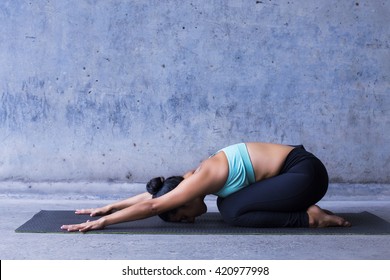
Athletes frequently ask themselves how to improve their energy. Business owners also need to be energetic to succeed. Being a successful business requires a lot of mental stamina as well as physical stamina. Therefore, it is important to learn how you can increase your energy naturally.
Exercise boosts energy levels
Exercise can improve your energy and mood and be beneficial for your overall well-being. Even a 20-minute workout can boost your energy levels. Studies have shown that exercise increases the production of dopamine, the chemical responsible for enhancing alertness and motivation.

Try adding new foods to you diet
Eating foods with low glycemic index can increase your energy levels. These foods are low sugar and provide a steady boost of energy. These foods include dark chocolate, berries, dark chocolate, eggs and protein.
Hydration is key
A healthy lifestyle and good health are key to maintaining your energy levels. Drinking plenty of water throughout the day is the best way to stay hydrated. Water comes from many sources including fruit and vegetable. About 20% of our fluid intake is from food. A water bottle is a must for everyone. Water is the most important beverage, but it's important to select beverages that suit your needs. Avoid calorie-dense drinks if you wish to lower your calorie intake.
Supplements
Supplements can be a quick way to increase your energy levels. Energy supplements can help you get through the day, regardless of whether you are under stress, sleeping less, or getting enough exercise. Many of these supplements contain caffeine but there are many other ingredients that can increase your energy.
Taking a power nap
You can use power naps to increase your energy throughout the day. They can last from 20 to 30 minutes. The key to a power nap is to find a comfortable place where you can lie down and get some shut-eye. A relaxation playlist can be used to help your mind know it is time for sleep.

Get enough sleep
Sleep is essential for optimal health. It is as vital as eating a balanced diet, exercising regularly, and getting enough sleep. Modern lifestyles can make it difficult to get the required amount of sleep. According to a recent study that looked at sleep habits, those who are sleep deprived can suffer from both short-term as well as long-term problems. They might be less alert or have memory loss.
FAQ
How long does it take to learn yoga?
Yoga is a lifelong endeavor that requires dedication as well as patience. Learning new things takes everyone at their own pace.
It doesn’t matter how old your age is. With enough commitment and hard work, you can master any yoga routine.
How does yoga work?
Yoga is based upon alignment, breath control. Meditation and stillness principles. It can create a sense of calm and peace within the practitioner when it is done correctly.
The first step in any yoga class is to warm up your body. For example, you might start with stretches like forwarding bends (bending forward), backward bends (bending backward), twists, and side bends. These moves loosen tight muscles and prepare you for deeper poses.
Next comes "standing", which is a balancing position. This pose involves standing on your feet with your arms extended at your sides and looking down towards your floor. Your body should feel stable, centered, and balanced.
The final step is deep stretching. To do these poses, lie face-up on a flat surface and lift your legs. You can keep your balance by holding onto something sturdy to stop you falling. If you don’t own anything to grab, you can place your hands on the ground.
After completing all of these poses, you can move on to a series standing poses. These include the warrior pose (mountain pose), mountain pose, downward facing, upward facing, plank pose, last pose, and the warrior pose (warrior pose).
It is important that you breathe deeply and slowly while doing yoga. Deep breathing is good for your lungs and calms the mind. Concentrate on your inhales, and exhales to do this. Make sure to count every time you take another breath.
You can do yoga wherever you are, even while cooking. Just follow the same steps above, but sit upright instead of lying on the ground.
Try starting yoga for 10 minutes each day if you're a beginner. Don't forget that yoga can benefit anyone, no matter their age.
How long should a class of yoga be?
Yoga sessions last between 45 minutes- 1 hour. The type of yoga that you are doing will determine the length of your session. For strength-building exercises, it would be sufficient to last 45-60 minutes. If you are looking for relaxation or mediation, a longer time may be required.
It also depends on the yoga class that you're taking. Some classes require quick movement while others encourage slow, deep stretches.
What are the advantages of yoga for beginners
Yoga helps you to have better posture, flexibility, strength, breathing control, relaxation, and mental clarity. It can also help you be more aware of others and the world around.
Yoga teaches you how to live life fully. Yoga teaches you to listen to your body. Accept yourself for who you are. You also learn to let go stress and tension.
You learn to relax, enjoy and appreciate life.
What are the best kinds of yoga mats to use?
There are many options for yoga mats. Consider the size, price, and longevity of your choice when choosing a yoga mat.
A high quality mat will not only protect your floor from scratches but also be thin enough to allow you to move quickly.
An inexpensive mat might not be enough to provide sufficient support.
How long does it usually take to become an expert in yoga?
It depends on the style of yoga you are practicing. Some styles are slower than others. But even if you're just beginning, you can expect to improve over time.
The more you practice the better you'll get. Even after a few weeks of regular practice, you'll begin to see improvement.
Statistics
- In comparison, a 125-pound person is estimated to burn 135 calories in 30 minutes of walking (at a pace of 15-minute miles) and 210 calories bicycling at a moderate pace on a stationary bike. (everydayhealth.com)
- Gentle yoga has been shown to ease some of the discomforts of tender, swollen joints for people with arthritis, according to a Johns Hopkins review of 11 recent studies. (hopkinsmedicine.org)
- According to the Agency for Healthcare Research and Quality, falls are incredibly common among older adults in nursing facilities. Even the simplest ones can increase the risk of death (24). (healthline.com)
- A 2020 review of 27 studies (1,805 total participants) of yoga interventions in children or adolescents found reductions in anxiety or depression in 70 percent of the studies, with more promising results for anxiety. (nccih.nih.gov)
- Start your Fall off right with 20% off All Access Membership when you sign up by 9/25! (corepoweryoga.com)
External Links
How To
Can yoga help with menopause symptoms?
Yoga is an ancient tradition that originated from India. It emphasizes stretching, breathing, and meditation. It has been practiced for thousands of years as a way to stay fit. As people search for other ways to stay active and healthy during stressful times, this has been gaining popularity.
Yoga is about using postures (asanas), in order to stretch muscles and improve flexibility. This helps to reduce tension and build strength.
There are many types and styles of yoga. Each type focuses on specific aspects of the body, such as breath, stretching, and relaxation.
The aim of all forms of yoga is to achieve balance within the body and mind. Yoga can improve your fitness, sleep quality, weight loss and energy levels as well as reduce stress levels.
Numerous studies have shown that yoga is beneficial for conditions like anxiety, depression, or insomnia. There is not much evidence to support its effectiveness in treating other health conditions, such as those related to menopause.
Yoga helps you feel happier, healthier, and more fulfilled. It also teaches you how relax and manage stress situations. These skills could prove useful when you are going through menopause.
It is important to note that yoga can cause muscle soreness after exercise, so starting at a low-intensity level is wise. Before you start yoga, talk to your doctor about any concerns you may have.